Need for speed: Tackling La Carrera Panamericana, the world’s oldest road rally
As David Tremayne discovers, the race is a reflection of national spirit, a unique sporting opportunity to explore and appreciate the real Mexico

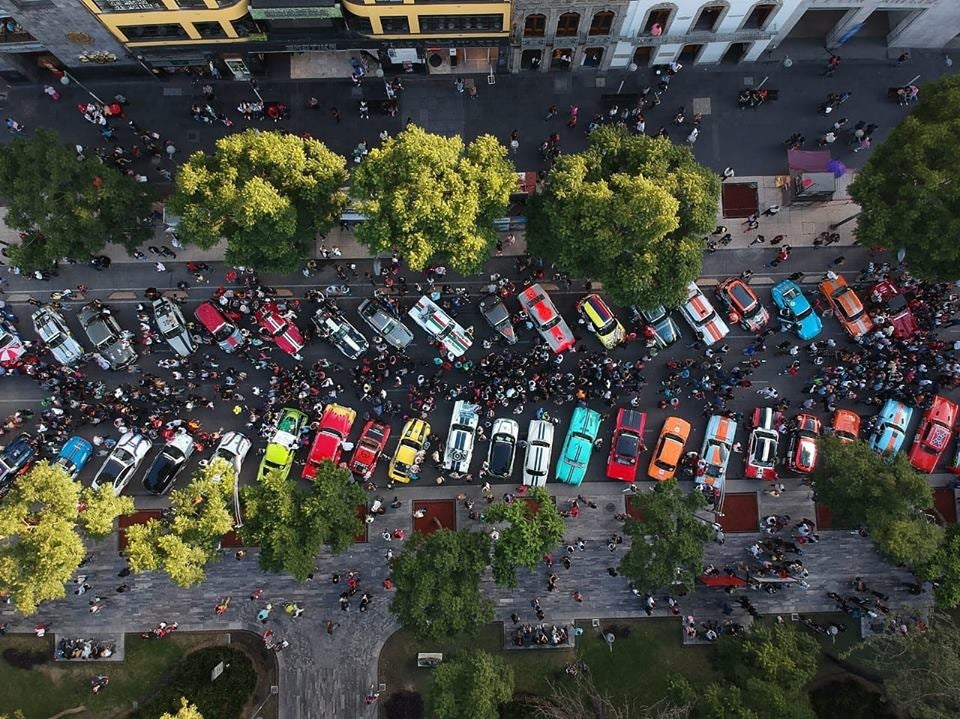
Your support helps us to tell the story
From reproductive rights to climate change to Big Tech, The Independent is on the ground when the story is developing. Whether it's investigating the financials of Elon Musk's pro-Trump PAC or producing our latest documentary, 'The A Word', which shines a light on the American women fighting for reproductive rights, we know how important it is to parse out the facts from the messaging.
At such a critical moment in US history, we need reporters on the ground. Your donation allows us to keep sending journalists to speak to both sides of the story.
The Independent is trusted by Americans across the entire political spectrum. And unlike many other quality news outlets, we choose not to lock Americans out of our reporting and analysis with paywalls. We believe quality journalism should be available to everyone, paid for by those who can afford it.
Your support makes all the difference.The Federales’ Dodge Charger was pulling an easy 180 kmh, and we dogged their every move, curve for curve, line for line as their very presence encouraged other road users to make alternative lane arrangements. Pronto.
Our mirrors were jammed full of their compadres, maybe six of them in line abreast astern of us, red and blue lights flashing. Outwardly it must have looked like a scene from Thelma and Louise, though our little green Mini Cooper was no Ford Thunderbird, and I was too occupied with the chauffeur duties to decide whether I was taking the Susan Sarandon role and former Indycar race winner Mario Dominguez, sat alongside me in the co-drivers’ seat, was Geena Davies.
All along our route, families stood waving arms and flags and cheering us on.
And the true beauty of it all, besides that heartfelt enthusiasm and encouragement, and the breathtaking scenery slamming past our windows, was that every single damn thing we were doing was not just absolutely legal, but positively encouraged by the Feds. Hell, we’d even had a coffee pit stop and photo shoot with them half an hour earlier. When was the last time you did that?
Welcome to La Carrera Panamericana, the Last Remaining Road Race.
Forget the pale shadow of the revived Mille Miglia, or the Cannonball Runs. The current race, revived in 1988, may not be the flat-out, widow-maker that it was in its heyday in the Fifties, when drivers of the calibre of Juan Manuel Fangio, Alberto Ascari, Piero Taruffi, Phil Hill, Bill Vukovich, Troy Rutmann and Mickey Thompson flat-footed giant chrome-festooned American saloons or dinky little Italian racing barchettas over the superfast yet brutally unforgiving highway that newly linked Alaska with Mexico.
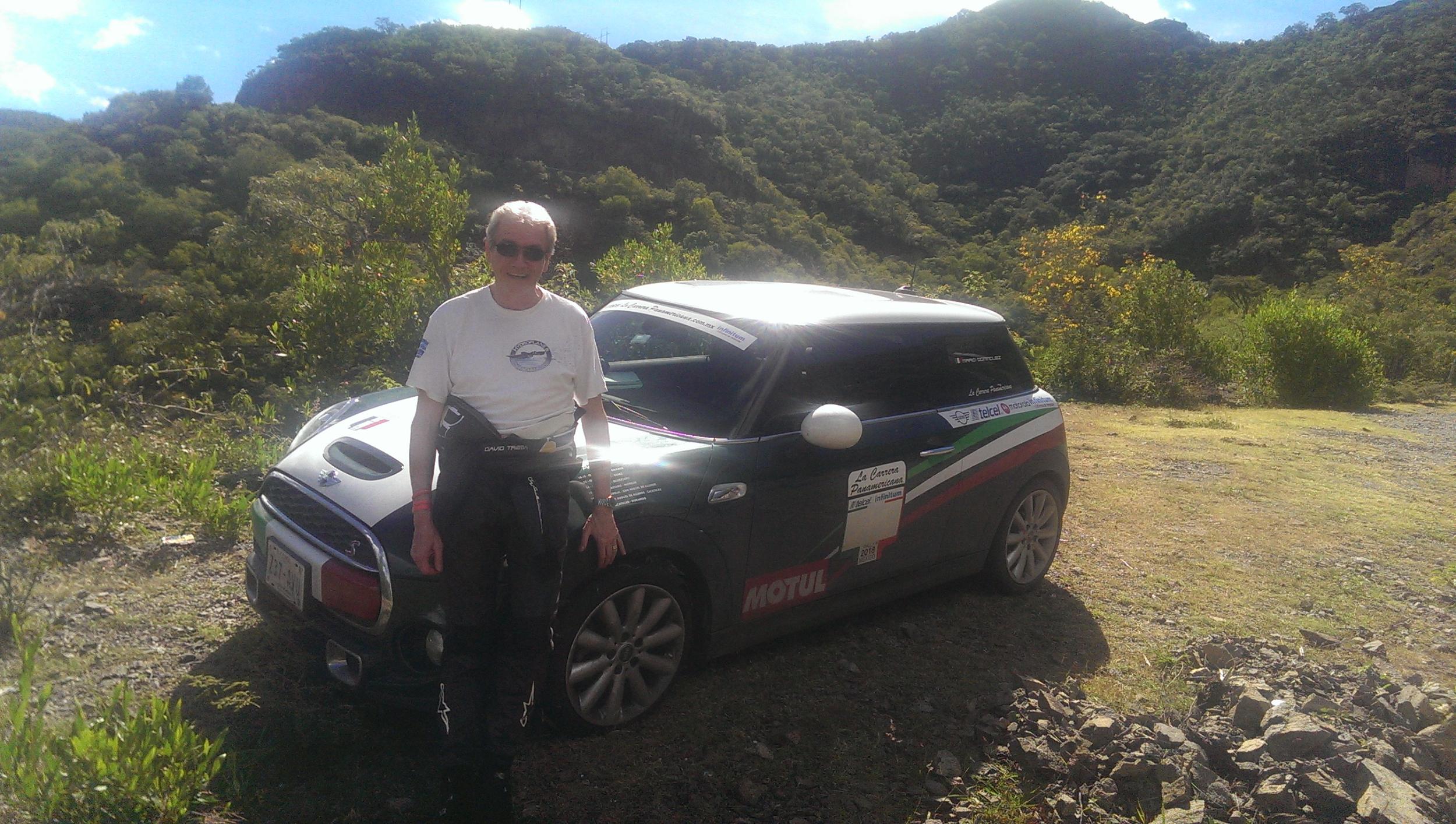
But it isn’t far off. Other road races have evolved into regularity trials, but here you are encouraged to be fast; as we’ve seen, the Feds turn blind eyes. Mexico may be the last bastion, the only place where they don’t frown on speed.
I’m doing three days on the event. For so long I’ve been badgering Rodrigo Sanchez, publicity guru of the Mexican GP which will be staging a race for Panamericana cars as part of the 2018 show, that he’s figured out a way to shut me up. I’ve always wanted to participate in this awesome event, and now I’m due to passenger Mario.
It’s Saturday, 13 October. After flying back from the Japanese GP through Dubai and on to Los Angeles, and thence to Mexico City and, finally, Oaxaco (it’s pronounced Wahaca) at 05.15 I’m downstairs outside our hotel, a magnificent medieval place that looks even cooler in the early morning darkness as I take in the beautiful racing machines parked outside. There’s no official parc ferme like there might be on a rally; you park where you can on the streets. It’s all just part of the kooky appeal of this great event…
Doug Mockett’s Oldsmobile is parked just up the road, all red and yellow and LA hot rod flames style, a typical Panamericana vehicle from the Fifties, and the winner of the 2002 event. It’s surprisingly quiet at this hour, on the deserted back streets, until they briefly fire up its muscular V8. I tell them it’s a whole lot better than any alarm clock.
There is going to be no better place to appreciate and understand just what the Carrera Panamericana means than to be right there at the heart of it. I could follow along with the organising team, who’ll jump ahead of the competitors to set up each control section, but being in a car, right there on the same road just ahead of all the other competitors, alongside a recognised hotshoe… It’s a unique buzz. As is the knowledge that I’ll almost be one of the racers myself. I feel quietly jazzed. This is a good thing to do every so often in your life, putting yourself in a position where you’ll be tested. Especially when you live it among people who regularly challenge themselves every fortnight in front of a critical and often brutally judgemental world all too ready to see and record only their mistakes. It’s therapeutic to remind yourself every so often of what their lives must be like, up there on their high wire in the unforgiving glare of the spotlight.
The one thing about the trip that I’ve been dreading is reading maps. I admit that immediately to Mario. My best friend knows him from their Indycar days and has told me he’s a gentleman. She’s spot on.
“Let’s not bother with them,” he says immediately with a grin. “We can follow the others to each stage, then read the road by eye.”
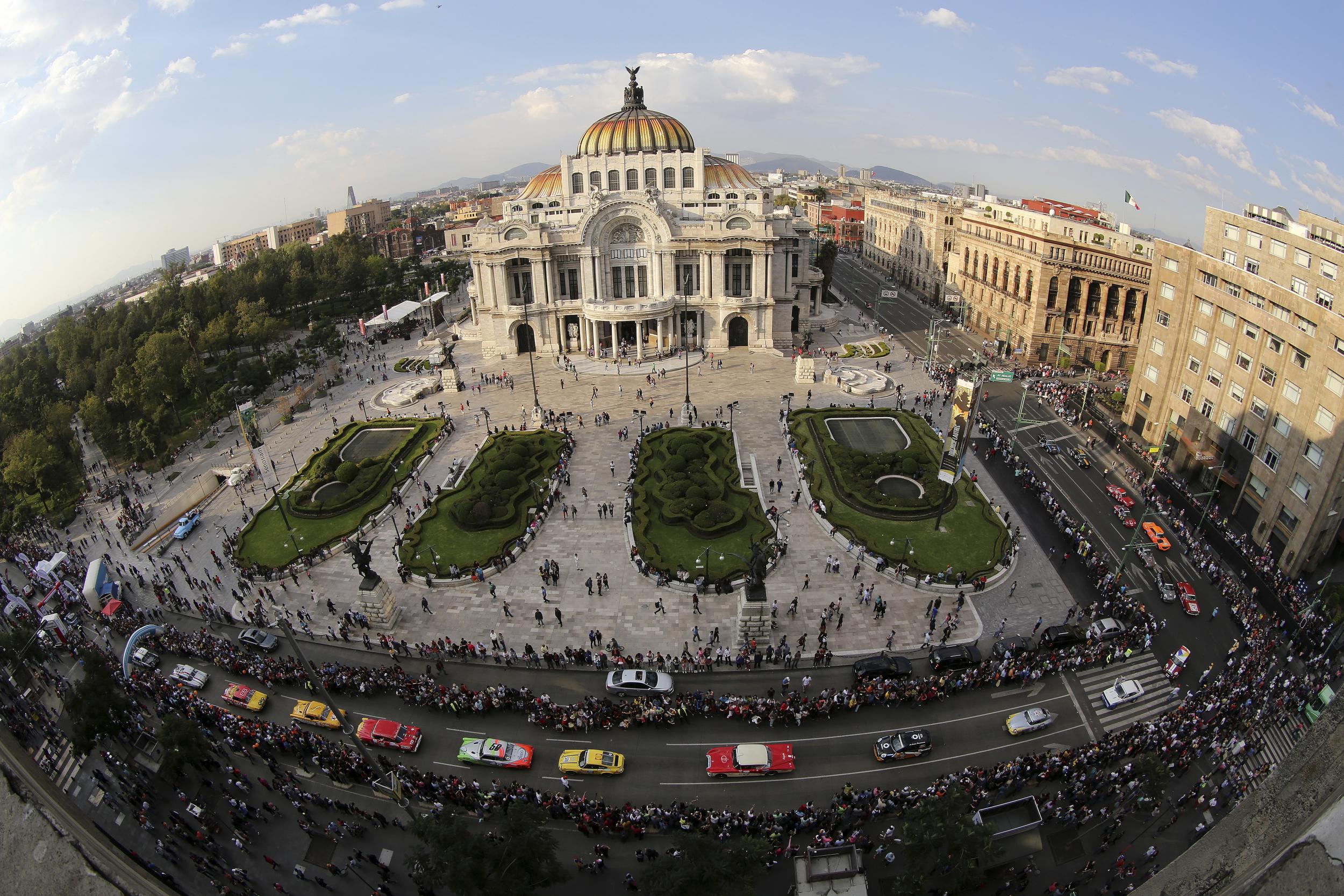
Ah, my kind of guy. Our friendship is one of those instant things you know will last.
But it gets better than that. We swap over so I can do some road section driving, then we come across all the other cars parked up.
“This must be a speed section,” Mario surmises.
“Okay, we’d better swap back over.”
“Nah, why don’t you do this one.”
And so I find myself pushing a little green Mini to my limits, not just on this stage but the next three, between Oaxaca and Nochixtian, Nochixtian and Tamazulapan and then Tamazulapan and Huajuapan de Leon.
All those diagrams I’d been sent weeks ago suddenly become a reality of twisting, climbing, plunging, challenging ribbons of road, ranging from the smooth to the broken-surfaced, the dry to the damp or muddy and therefore very slippery.
Of course the Mini understeers, with its front-wheel drive. But that’s a safety blanket for a Carrera rookie. You push as far as you can steer, then you back off when the initial grip subsides and hold it on that edge as your final line. And here’s the revelation. The little car really does have masses of grip. So much so that it forgives your myriad mistakes, holds your hand in your seemingly erratic progress from corner to changing corner.
All the time you are putting what skill you have into the process, Mario sits there happily, ice-veined as you might expect from a man who triumphed in Indycar races in Surfer’s Paradise and Miami, and endorsing his reputation and multi-faceted character by giving nothing but encouragement that simply boosts your confidence.
Perhaps it boosts it a little too much. I happily set the Mini up to understeer its way on to the ideal line, and by Stage 2, the local police jefe (who, of course, is a mate of Mario’s as he is still one of the most famous sports stars in Mexico) looks at the state of the front tyres and grimaces.
They don’t look good. Pretty soon, they’ll look a whole lot worse.

Our day changes at the 24 kilometre mark on Stage 4. We’re running out wide in a right-hander, using pretty much all the road as Mario has advised, when the front left tyre gives up and bursts. Inconvenient…
There’s a drainage ditch to my left, then a rock wall. But I manage to keep the Mini off the nasty bits and pull off just after the next left-hander. Both of us laugh ruefully as we play a game of watching the passing racers and waiting for the tow-truck.
We are now in another typical Carrera mode, familiar to so many participants over the years. Hurry up and wait. The truck eventually arrives and takes us on a slow, very traffic-infested journey, on which we pass a stricken Studebaker which has crunched itself after hydraulic steering failure.
We eventually arrive in Huajuapan de Leon, and in true Carrera fashion manage to craft our own destiny after getting off-loaded at a local gas station. By pure fortune we come across Victor Perez Jnr and his VP Garage crew, who are running several Minis in the event. In moments they have swapped both our front wheels.
We’re mobile again, but miss the next stages as we catch up with our Federale pals. During our coffee stop I get Mario to tell their driver, J.P. Veloz (fittingly that’s Spanish for speed), what a blast I’m having and how this is the coolest thing I’ve ever done with speed cops. He laughs, goes to his car, and emerges with a toy cop car as a present. We then meet up with everyone a little further on at kilometre post 100 outside Mexico City. First, there’s a curiously moving rendition of the Federale’s Anthem, then we are all ready for the high-speed escort into the capital. Mario and I lead it, behind J.P.
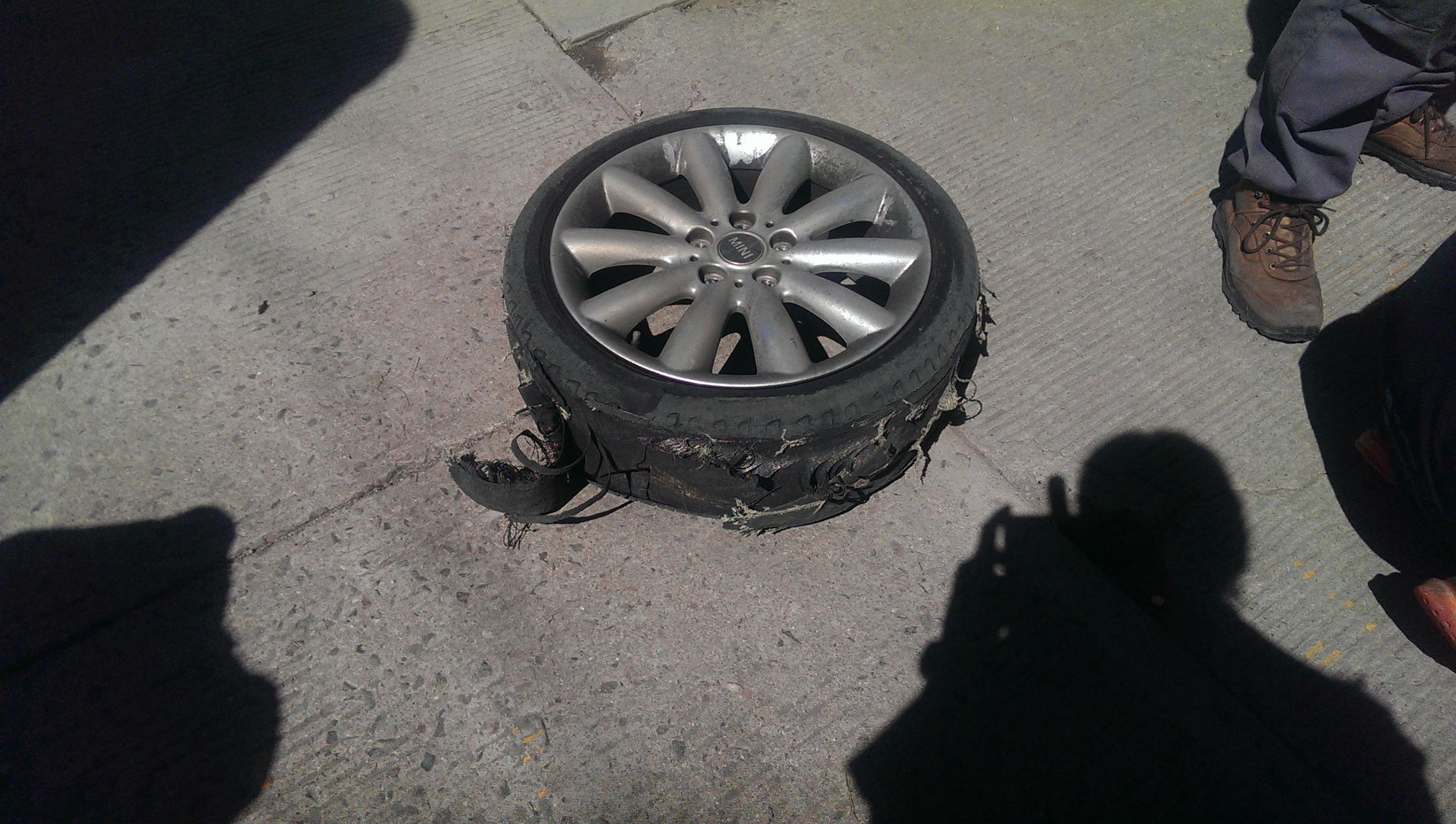
The streets of CD-MX are lined with people as we drive past one historic building after another, and it’s a massive buzz to be right at the centre of it all. Part of the show. I thank Mario for his kindness letting me drive; without that, I’d have felt a bit of a fraud.
The next two days I passenger former racer Eduardo ‘Lalo’ Pena Leon in a Subaru, and enjoy not only a close-up assessment of his easy yet very quick driving style, but also the wonderful scenery as we thread from Mexico City to Queretaro, and from there to Morelia. When I first came to Mexico for the 1986 grand prix I didn’t much like the place. Now, seeing so much more than just Mexico City, I fall in love with it. Parts of it remind me of Scotland and Austria, others the vistas of Nevada. The people are kind and friendly.
Many of the stages we do are heavily forested either side of the road, with nothing to stop errant cars going into the trees. It transpires that Mario pushes his mate J.P Veloz a little too hard on one stage, and the Federali’s Charger looks very secondhand after hitting an arboreal object pretty hard.
I’m reminded of what Formula 1 must have been like in the Fifties and Sixties before Jackie Stewart’s life-persevering safety crusade began to bite. Interesting…
The 2016 winner, former French superbike racer Hilaire Damiron, crashes the Studebaker he shares with his Brazilian wife Laura and drops from the lead. They recover to take an eventual second place behind the similar car of 2015 winner Emilio Velazquez and Christian Coronel. Their machines might look like Fifties racers, but underneath they pack 750 bhp 6-litre V8 muscle and owe more to today’s NASCAR machines.
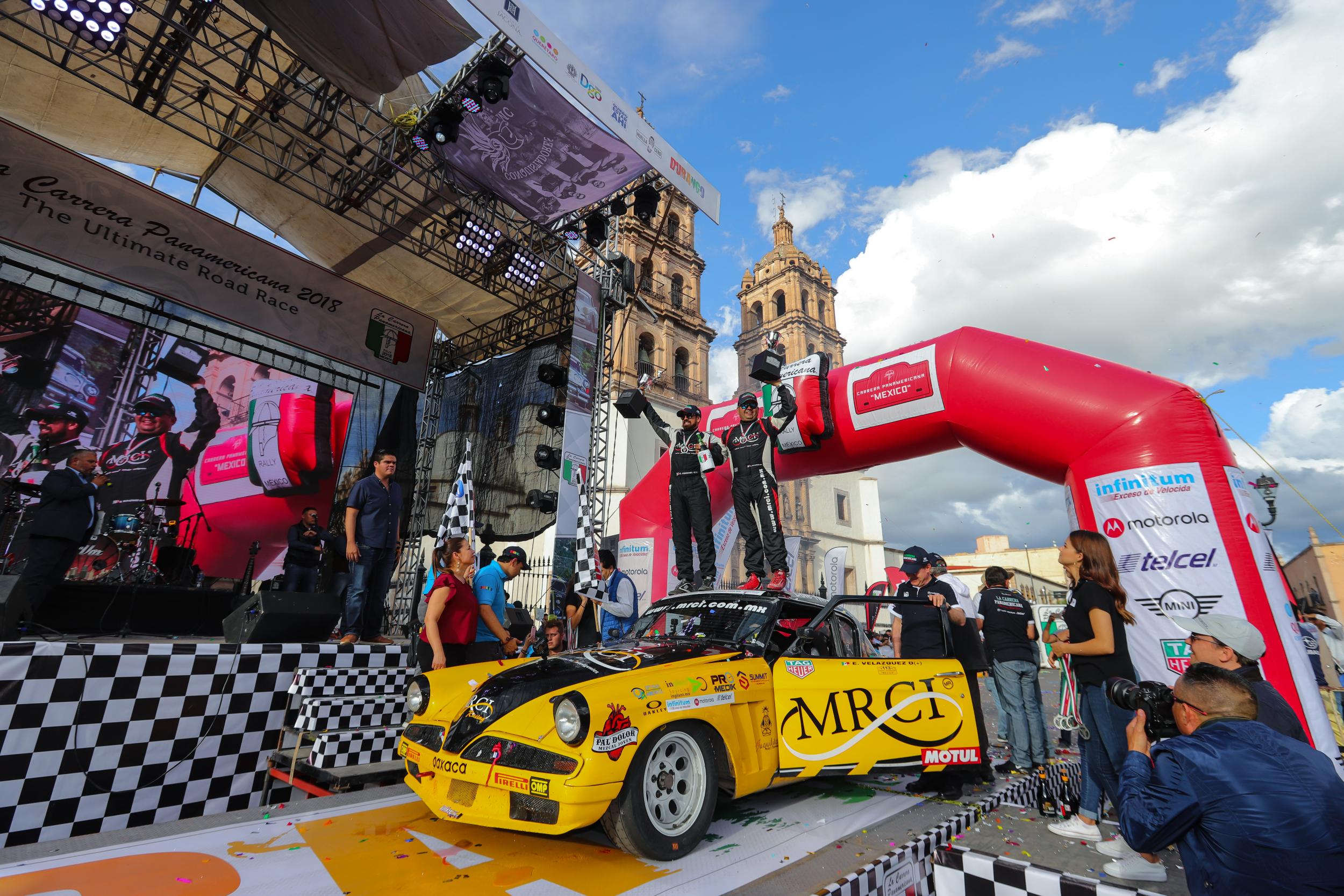
On my final night, in Morelia, I’m invited to say some words as hyper-enthusiastic event reviver and organiser Eduardo de Leon Camargo, Lalo’s uncle, holds a little ceremony to celebrate the 50th anniversary of Mexican star Pedro Rodriguez’s triumph in the Le Mans 24 Hours. I meet Pedro’s niece, and feel genuinely humbled to speak of the first race driver who was ever one of my heroes, and one of the three best drivers in world when he was killed in 1971.
They have a saying, ‘only in Mexico’, which they use often when something defies logic or belief. Trust me, the Carrera Panamericana does both.
Where else these days can you encounter such touching camaraderie while being permitted to drive as fast as you dare from one end of a country to the other, on public roads? If the Isle of Man TT is the ultimate freedom for bike racers, this surely must be its car-driving equivalent.
But it’s so much more than a lunatic road race condoned and encouraged by authorities savvy enough to appreciate its value. It’s a reflection of national spirit, a unique sporting opportunity to explore and appreciate the real Mexico and, perhaps, to lay to rest the ghost of stereotypical imaging.
Of course it’s a throwback to a different era, but as a tool for tourism it’s the world’s fastest and most spectacular marketing campaign, a razor-sharp stiletto adroitly wielded to carve a more accurate image of the country and its people.
Join our commenting forum
Join thought-provoking conversations, follow other Independent readers and see their replies
Comments